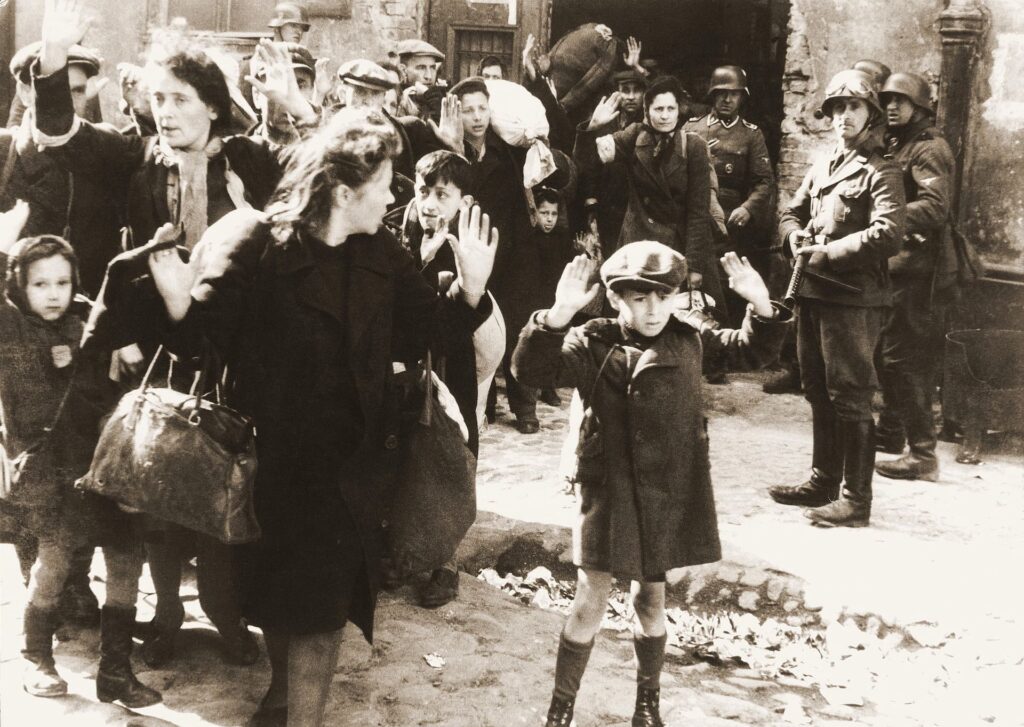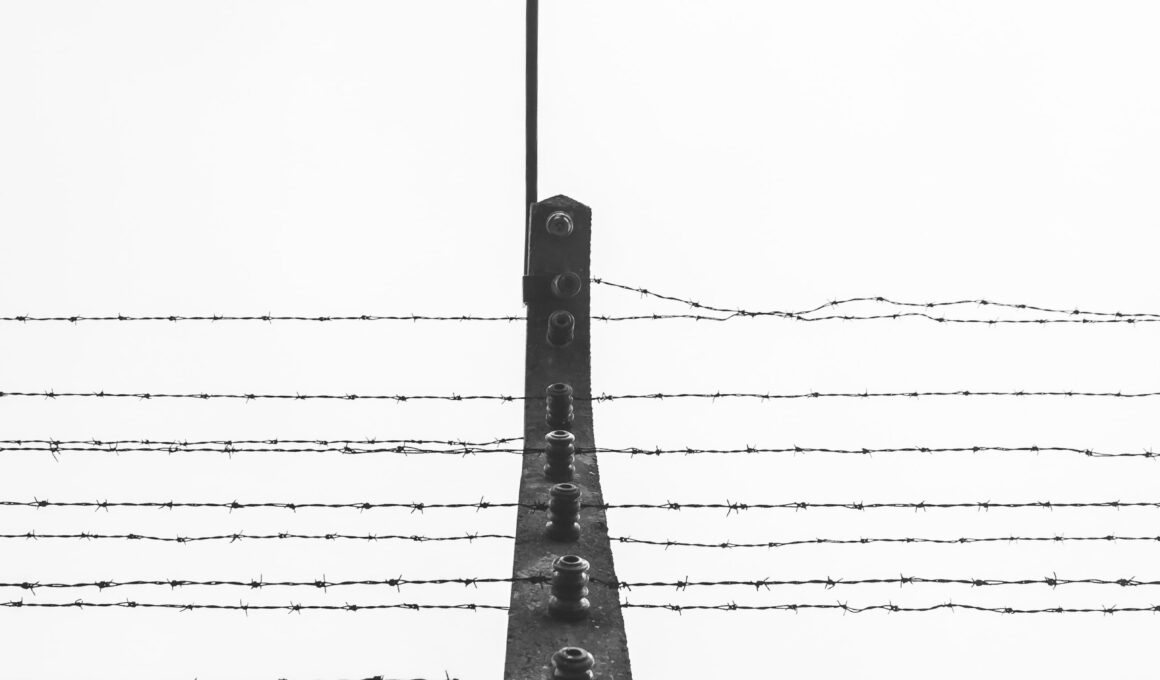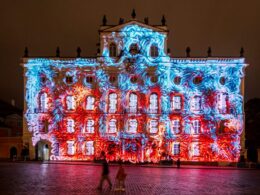Table of contents Show
The Nazi occupation of Prague officially began on the 14th of March 1939. After the Czechoslovakian President, Emil Hacha, signed off the country, Hiter took over almost instantaneously. But after his proclamation of Prague as the Reich of Bohemia and Moravia. Hitler did not step foot in Prague. He left power in the hands of the Reichsprotektor installed in the city. Even back then the citizens of Prague used cultural spaces to show their passive resistance to the Nazi’s by singing National Anthems and Patriotic Songs, which eventually attracted the ire of the Nazi’s who then banned the singing of patriotic songs in public spaces.
These days, the leftover aftermath of the German occupation of Prague can still be seen in different areas of the city. 30 miles north of Prague is Terezin which was a concentration camp for the Czech Republic during the War. The Village of Lidice that was reduced to the ground, and the bullet-riddled exterior of St Cyril and St Methodius Cathedral which served as a stronghold for the Czech Resistance after the assassination of Heydrich Himmler, all serve as preserved memorials for when the Germans occupied Prague.

The Church of the Holy Spirit, a beautiful Gothic landmark in the heart of Prague, bore witness to the tumultuous events of the Second World War, serving as a refuge for those seeking solace and hope amidst the chaos of war.
The Primary Event Leading To The German Occupation Of Czechoslovakia
The German Occupation of Czechoslovakia was one of the early steps leading into the events of WWII. Because of the fact that the French Government did not want to face Germany alone, they allied with the British Government in an attempt to suppress the expansion thoughts of Nazi extremist Adolf Hitler. At the time the Second President of Czechoslovakia Edvard Beneš was against acceding to the demands of the Germans but because the Governments of France, United Kingdom and Czechoslovakia were set on avoiding war. They all signed the Munich Agreement, which was then breached by Germany in March of 1939.
By the 10th of March 1939, Czechoslovakia geographically no longer existed and was replaced by the Protectorate of Bohemia and Moravia.

What Was Czechoslovakia Like in WWII?
Czechoslovakia was regarded as ‘The Arsenal of the Reich’ during the war as it was into the major production of weapons. Arms such as Machine guns, Tanks and Artillery which were majorly assembled in the Skoda factory of Plzen. These weapons all came out in steady stream to support the heavy military mobilisation of the Germans.
Czechoslovakia was ruled by the Reichsprotektor Heydrich during the Second World War. During his time as Reichsprotektor, he sought to ingratiate himself as an ally to the Czechoslovakian working class by increasing rations for the armaments industry workers, improved health services across the state, free shoes, and for a short time a Monday to Friday work basis as Saturday was made a holiday. However, it was all a twisted plan of Heydrich as he called it ‘Optical Effects’. He believed that mere actions of support and a little rest would be enough to quell the citizens of Czechoslovakia and gain support of the working class. Also, it will lead to increased productivity in the industries. However, the prices of things continued to increase and the increased wages failed to keep up, which led to the workers having reversed effects of Heydrich’s plan.
The Nazi Invasion of Czechoslovakia
The Invasion of Czechoslovakia happened between the Middle of 1938 to the end of 1944. Starting from when Sudetenland was taken by the Nazi’s in 1938′, leaving Czechoslovakia weak as Sudetenland land was supposed to be their area of defence from Germany in the case of War. It took Hitler less than Six months to get the major parts of Czechoslovakia under him, and by the evening of the 15th of March 1939, Hitler stepped into Prague. The following morning, Prague was proclaimed the Protectorate of Bohemia and Moravia in the Prague Castle by Hitler himself. Before the end of 1944. Every single part of Czechoslovakia was under the rule of the Protectorate.
During the course of the invasion of Czechoslovakia, the Czech Resistance proved to be a highly serious threat to the rule of Hitler. Comparatively speaking, the Germans despised people like Emil Hácha who was willing to do their bidding as collaborators and proved to respect people like Edvard Beneš, the leader of the Czechoslovak government-in-exile, who held to their Czech sense of identity most defiantly. Heydirch’s report to Berlin stated that Hácha was “incapable of Germanization as he is always sick, arrives with a trembling voice and attempts to evoke pity that demands our mercy.” But about Beneš, he said narcissistically that he has a high respect for Edvard, as he is an ardent defender of Czech interests which led him to believe that Beneš must have some German Blood.
The Invasion of Czechoslovakia was concluded by the end of 1944, with regions such as Hungary and Poland sharing the same fate of subjugation.
Anschluss German Occupation Of Czechoslovakia
After going with the Anschluss of Austria to Nazi Germany in March 1938, Hitler obtained the Munich Agreement in September of 1938, and still went ahead to cut off the ethnic Germans living in Czech Regions. The incorporation of the Sudetenland into Germany was very effective in dealing crippling blows to Czechoslovakia, as they lost the majority of the extensive border fortifications that were located in the area. Thereby leaving the country weak against the invasion of the Nazi’s that came swiftly after.
The Subjugation of Czechoslovakia
The fact that Czechoslovakia was called the Arsenal of the Reich goes to show that the amount of weapons coming out of Czechoslovakia was a significant amount. According to Hitler himself, the German Occupation of Czechoslovakia alone brought Germany 2,175 Field Cannons, 469 Tanks, 500 Anti-Aircraft Artillery Pieces, 43,000 machine Guns, 1,090,000 Military Rifles, 114,000 Pistols and about a Billion Rounds of Ammunition and 3,000,000 Anti-AirCraft Shells. This amount of weapons would be sufficient to arm about half of the then Wehrmacht.
This level of weapon production alone would make sure that at the slightest sign of weakness, Czechoslovakia would always be overrun by those who would want to use it for military arms productions for themselves.
Terezin Concentration Camp Tour from Prague
Take a guided tour from Prague to Terezin Concentration Camp, a former Nazi concentration camp. Learn about the history of the camp and the atrocities that were committed there.
Highlights
- Visit the Terezin Small Fortress, the museum, and other sites connected to the Second World War.
- ake a guided tour through the site of the former concentration camp.
- Learn about the atrocities committed at Terezin.
Included
- Roundtrip bus transfer from Prague to Terezin
- Admission ticket to Terezin Small Fortress
- Local guide in Terezin Small Fortress
- Audio guide in the bus
- Live guide in the bus





